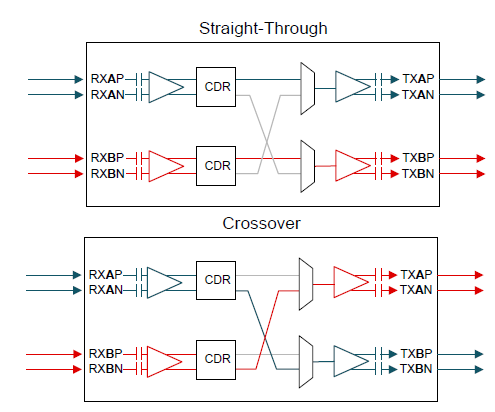Tool/software:
Hi Team,
Currently Nokia is investigating the use from the DS560DF810 Retimer (with crosspoint) in thier application.
They are looking for a solution to switch between two different 50G (output) channels. As such, only one signal path will actively be used.
So, They will have only the straight-Trough situation OR the Crossover situation in the application (from RXB to TXB or from RXB to TXA e.g.).

In the datasheet there is only one power figure for the total device supply current. Which shall be a way to high to take this number for thermal and power analysis.
Can you provide us the power figures for our application where only the Straight-Trough OR the Crossover situation shall be used?
We suppose that the other signal path (from RXA to TXA or from RXA to TXB) will not be active and shall not consuming any power? Can we disable this other signal path or can we put this to power-down mode to avoid additional power consumption?
Can you provide us some accurate power figures for this kind of use cases (crosspoint for 50G Ethernet with other signal path disabled)?
If you need some more information, feel free to ask.
Thanks and Regards,
Chintu

